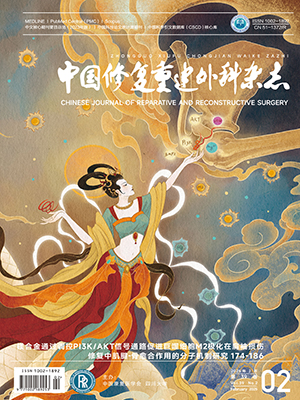To observe the clinical effect and safety of the nano-hydroxyapatite/polyamide 66 (n-HA/PA66) composite in repairing the bone defects due to benign bone tumors. Methods From January 2003 to May 2005, 38 patients (21 males, 16 females; age, 19-58 years, averaged 38.5 years) with the bone defects due to benign bone tumors were treated with the n-HA/PA66 grains. Among the 37 patients, 11 had fibrous dysplasia, 14 had bone cyst, 10 had giant cell tumor of the bone (Grade Ⅰ), and 2 had enchondroma. The tumors ranged in size from 1.0 cm×0.7 cm×0.4 cm to 10.0 cm×4.0 cm×3.0 cm, with the location of the proximal femur in 12 patients, the distal femur in 7, the proximal tibia in 9, the proximal humerus in 5, the phalanges of the finger in 2, the metacarpal bone in 1,and the calcaneus in 1. Allthe benign bone tumors underwent the curettage treatment, and then the tumor cavities were filled up with the n-HA/PA66 grains. The incision healing, local inflammatory reaction, rejection, toxic reaction, tumor cavity healing, and function recovery of the limbs were all observed after operation. Results All the patients were followed up for 5-33 months, and all the incisions healed by the first intention except 1 incision, which developed infection. The inflammatory reaction was mild, with no reection or general toxic reaction. At 3 to 5.5 months(mean 4 months) after operation, osteogenesis wasfound in the space filled with the n-HA/PA66 grains. Eight months after operation, the patients’ lower limbs could bear weights; 5 months after operation, the upper limbs could complete daily work. Conclusion The n-HA/PA66 grains have great biological safety, good biocompatibility, and good bone conduction, which aregood materials for the bone repair and reconstruction, and can be safely, andeffectively used for repairing the bone defects due to benign bone tumors.
Citation: LIANG Xi,JIANG Dianming,NI Weidong,et al.. CLINICAL OBSERVATION ON NANO-HYDROXYAPATITE AND POLYAMIDE 66COMPOSITE IN REPAIRING BONE DEFECT DUE TO BENIGN BONE TUMOR. Chinese Journal of Reparative and Reconstructive Surgery, 2007, 21(8): 785-788. doi: Copy
Copyright © the editorial department of Chinese Journal of Reparative and Reconstructive Surgery of West China Medical Publisher. All rights reserved




